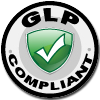Generation of Stable Cell Line in 28 Days
Generation of Stably Expressing Cell Lines in 28 Days
A stable cell line is a population of cells that has been genetically modified to express a desired gene or protein in a stable and heritable manner. The generation of a stable cell line typically involves introducing a transgene or gene of interest into the genome of a host cell and selecting for cells that have integrated the gene and are expressing it at a stable level over time. Altogen Labs can provide development of stable cell lines in 28 days. Stable cell lines over-expressing a protein of interest (or shRNA construct targeting a gene of interest) are important research tools, particularly for the production of recombinant antibodies and other proteins, the study of gene functions, drug screening, and other applications. In addition, utilizing a stable mammalian cell line can make products more acceptable for clinical use. Stable cell lines will reliably grow for extended periods of time and can continue to express a transgene at a consistent rate. However, production of stable cancer cell lines and primary cells can be very expensive, labor-intensive, and time-consuming.
Altogen Labs offers several stable cell line generation services: protein overexpressing cell lines, RNAi knockdown cell lines, and reporter stable cell lines (luciferase, GFP, RFP, YFP). Company scientists provide expert services with years of cell culture experience with more than 150 cancer cell lines (available in-house). All clonal stable cell lines are developed based on individual client specifications, using highly efficient gene delivery technologies to produce stably expressing clonal cell lines in just 28 days. We can produce multiple clonal cell lines with various expression levels (low / medium / high expression).
Typically, antibiotic resistance or fluorescent reporter gene markers are incorporated into the plasmid DNA construct to facilitate selection process. These selection markers can be co-expressed on the same vector or independently expressed on two separate vectors. The selection process facilitates the selection of the most efficient expressers or silencers of the gene of interest.
Standard services include transfection of plasmid DNA (15 – 20 µg), drug selection of clonal cells, colony pick up, generation of a stable line, expression and functional screening (at least 10 passages), and final validation of construct expression by qRT-PCR and/or Western blot analysis.
The Western blot analytical technique uses antibodies specific to the target protein in order to quantify the expression of the protein in a sample. The genomic integration of the target gene and associated mRNA expression increase can be verified using quantitative real-time RT-PCR technique. The utilization of both techniques validates that the target gene is both integrated into the genome and functionally expressing.
Download Altogen Labs Stable Cell Line Development PowerPoint Presentation: [PPT]
For pricing and timeline estimates please contact us at info@altogenlabs.com or call Altogen Labs at 512-433-6177.
Get Instant Quote for
Generation of Stable Cell Line in 28 Days

Typical protocol involved in generating a stable cell line:
- Choose a host cell line: The first step in generating a stable cell line is to choose a suitable host cell line that can be efficiently transfected and stably maintain the introduced gene. Commonly used host cell lines include chinese hamster ovary (CHO) and HeLa cells.
- Choose a suitable vector: The transgene of interest is typically introduced into the host cell using a plasmid vector. The choice of vector depends on the specific application and the host cell line being used.
- Transfect the cells: The next step is to introduce the vector containing the transgene into the host cells. This can be done using various methods, including chemical transfection, electroporation, or viral transduction.
- Select for stable expression: To generate a stable cell line, it is necessary to select for cells that have stably integrated and are expressing the transgene. This is typically done by treating the cells with a selective agent, such as a drug or antibiotic, that kills cells that have not integrated the transgene or are not expressing it at a sufficient level.
- Isolate individual clones: The cells that survive the selection process are then grown into individual clones. Each clone represents a unique population of cells that has stably integrated the transgene.
- Screen for expression: Each clone is screened for expression of the transgene using various techniques, such as western blotting, RT-PCR, or fluorescence microscopy. Clones with high levels of expression and stable expression over time are selected for further study.
- Characterize the stable cell line: The final step is to fully characterize the stable cell line by analyzing its growth rate, stability, and expression levels of the transgene. The stable cell line can then be used for further research, such as drug screening, protein production, or functional studies.
For pricing and timeline estimates please contact us at info@altogenlabs.com with project details. Stable RNAi Cell Line Development: shRNA Gene Knockdown | Protein overexpression: Mammalian stable cell line development
